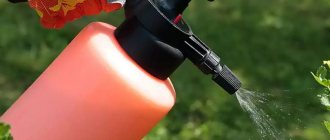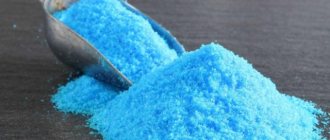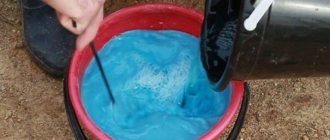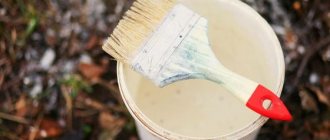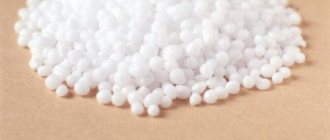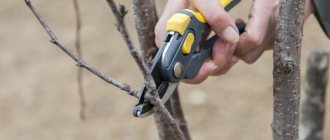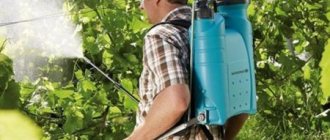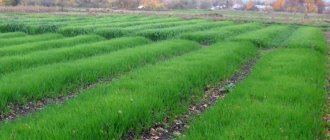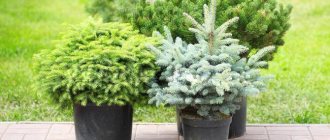Copper sulfate is very popular among gardeners; it is used in gardening as a chemical to treat and prevent plants from diseases caused by a virus or brought by insect pests.
Copper sulfate is a bluish-blue powdery substance in the form of crystals. Prolonged contact with oxygen leads to a change in the color of the substance to light gray, while the powder does not lose its positive qualities. You can return it to its previous blue hue by soaking it in water. The product is a representative of fungicides with a wide spectrum of action.
Reference! The packaging contains instructions and the designation “CuSO4”.
Copper sulfate is a contact agent that does not accumulate in plant tissues if the dosage is strictly observed. When this substance gets into the soil, according to some gardeners, it binds phosphorus compounds. Cultivated varieties of plants grown on a copper-saturated substrate, after treatment with vitriol, show signs associated with a lack of phosphorus. To eliminate phosphorus deficiency, plants require additional fertilizing with mineral fertilizers.
Why is copper sulfate needed in gardening?
The owner of a land plot constantly has to deal with difficulties that arise due to poor ecology, frost, drought or too wet weather in the summer.
Climate change, which occurs very quickly, negatively affects the general condition of trees. The immunity of plants decreases, and they become susceptible to infection by pathogenic fungi or harmful insects. Experienced gardeners know that to maintain a garden in a fruit-bearing and healthy state, you need to constantly monitor the trees and chemically treat the plants on time. The most famous and accessible means for treating the garden is copper sulfate.
Using this product can bring great benefits to plants in your garden. If copper is contained in sufficient quantities in the soil and in the plant itself, then its resistance to infection by viruses increases significantly.
Plants grown on peaty, sandy soil that does not contain black soil suffer most from copper deficiency.
Advice! It is recommended to treat garden trees and shrubs with a solution of copper sulfate 2 times a year: in spring and autumn. It is best to carry out the procedure in the warm period, when there is no foliage on the branches.
In the autumn, treatment is carried out after the trees have shed their leaves, and in the spring, when the buds are just beginning to swell. It is not advisable to use a solution of copper sulfate more often, since copper accumulated in the soil in large quantities can become an obstacle to the growth and development of trees and shrubs.
A large amount of this chemical element contained in the soil and plant tissues can cause a disturbance in the biological balance, which can subsequently harm mature fruits and affect human health.
Important! For 10 sq.m of land, the maximum copper content is 2-3 grams.
Copper sulfate is an integral part of known mixtures for processing, for example:
- "Burgundy liquid";
- "Kupronafta";
- "Bordeaux mixture"
It is necessary to carefully control the application of these fertilizers.
Why do you need spring gardening?
The gardener has to work with fruit trees throughout the warm season: from early spring to late autumn. In addition to standard measures such as watering, fertilizing and pruning, the garden requires preventive treatment against common diseases and pests.
It is in early spring that it is possible to suppress the growth of infections and larvae, which often overwinter on the bark, in cracks, in the soil near the trunk and even in the buds of fruit trees. Spring spraying of the garden allows you to solve several problems at once:
- Build plant immunity to dangerous infections and viruses.
- Prevent the reproduction and attacks of pests.
- Prepare fruit trees for flowering and ovary formation (feed the plants with minerals).
A gardener must understand that it is extremely difficult to eliminate the consequences of disease or insect activity, therefore the most important measures in garden treatment are preventive.
Types of solutions depending on concentration
- Burning solutions . The content of copper sulfate in this solution is about 3-5%. To prepare it, you need to dissolve 300-500 grams of crystalline powder in 10 liters of water. The resulting mixture can be used in extreme cases to eliminate mold in construction or to disinfect a plot of land. It is not recommended to use soil treated with this solution for cultivation for at least a year;
- Therapeutic and prophylactic solutions . The volume of copper sulfate used to prepare the therapeutic and prophylactic solution is 0.5-1% of the total mass. It consists of a mixture of 50-100 grams of copper sulfate dissolved in 10 liters of water. The solution is used to combat diseases caused by fungi or transmitted insect pests, as well as to protect wounds and cuts through which the tree can become infected with microbes.
- Solutions for fertilizer and feeding . In solutions for fertilizer, which is used to feed trees and shrubs, the copper content is about 0.02-0.03%. To make such a mixture you will need to dissolve 2-3 grams. copper sulfate in 10 liters of water.
INKSTONE
Ferrous sulfate, that is, iron sulfate, which is green crystals or powder that are perfectly soluble in water, has become widespread in the garden and vegetable garden for treating plants.
Iron sulfate is used in the garden, vegetable garden and country house as a weak systemic fungicide, a disinfectant for treating saw cuts, wounds, burns, tree hollows, and is effective against moss, lichen and gray rot. But everywhere - as a preventative agent for annual treatments. Iron sulfate is of little use as an “ambulance”. It is successfully used for secondary and additional purposes - preparing iron chelates, combating fouling of buildings and garden paths, disinfecting summer common areas. Iron sulfate solutions and their consumption rates in private households are used as follows:
0.3% (1 tablespoon per 3 liters of water) – when black leaf spots appear on roses. Diseased leaves are not cured, but the disease does not return 2-3 years after spraying;
1% (3 tablespoons per 3 liters of water) - in case of a massive attack of the apple borer, when it is no longer the crop that needs to be saved, but the trees, spray 5-10 liters per tree;
3% (300 g per 10 liters of water) – for autumn preventive treatment of fruit trees and berry bushes. Spraying rate is 1-2 liters per bush and 3-5 liters per tree;
6-7% (2 tablespoons per 1 liter of water) – for disinfection of cuts, wounds and cleaned hollows.
It is important to remember that ferrous sulfate solution cannot be prepared in steel, cast iron or galvanized containers. Autumn treatment with ferrous sulfate solution is carried out twice in normal years: a week after the last leaves fall and the second after 2 weeks, but always at positive average daily temperatures. If the year turned out to be cold and frost hit earlier, the second treatment is postponed until early spring.
It is important to know that even a weak solution of iron sulfate slows down the awakening of dormant buds for 1-2 weeks, and 3% begins to burn them out. Therefore, the main rule for working with this drug on the site is to spray iron sulfate only on dormant plants!
Iron chelate, a wonderful microfertilizer made from iron sulfate, is popular among gardeners and gardeners. It works as a prophylactic against non-infectious chlorosis. Plant cells immediately accept this microfertilizer. Prepare iron chelate: take 5 g of citric acid and dissolve it in 2 liters of water; in another container, dissolve 8 g of iron sulfate in 2 liters of warm water; pour the diluted iron sulfate very slowly, with constant stirring, into the citric acid solution; we bring the iron chelate mixture to a volume of 5 liters, obtaining a beautiful-looking, orange, almost transparent fertilizer; We immediately use the prepared half-percent solution of iron chelate to treat the plants.
But before you start treating chlorosis, you need to determine whether it is “iron” or “magnesium”. At the initial and final stages of chlorosis, “iron” manifests itself by pressing the less affected areas against the leaf petiole, while magnesium clearly creeps between the veins. But in some plants, both types of chlorosis are indistinguishable at any stage without special studies. In this case, it is better to first apply magnesium sulfate; it will not harm and will slow down the development of the disease.
On a note! Pure iron sulfate can be used for composting. To do this, they are sprinkled with layers of grass, placed in a compost pit at a ratio of 1:100 by volume. Iron sulfate will not only enrich the compost with iron, but also disinfect it. Limitations – not suitable for microorganic compost, because will kill the beneficial bacteria in the starter.
How to dilute the composition?
The preparation of a mixture with copper sulfate for treating garden plants occurs in two stages:
- Preparation of mother liquor using copper sulfate. To prepare a mother solution from copper sulfate, you need to take a container that will not subsequently be used as a food container. 100 g of copper sulfate must be dissolved in 1 liter of water. To prepare the mixture, use warm water, about 50-60 degrees, for better dissolution of the powder. The mixture must be stirred to obtain a homogeneous composition. The resulting 10% solution is not suitable for use in gardening. Before use, the masterbatch must be diluted with water to a copper sulfate concentration of 1 or 1.5%.
- Diluting the stock solution to obtain the required concentration. It is best to dilute the mother liquor in one container, into which, in addition to the mixture, water is added in the amount of 7-9 liters. It is recommended to treat garden plants with the resulting solution from a spray bottle or spray it manually.
Watch the video! How to dilute copper sulfate
Spraying with copper-containing solutions
Currently, copper sulfate is rarely used alone. Solutions in combination with other components are considered much more effective:
- Bordeaux mixture = copper sulfate + slaked lime. In the spring, before the buds open, use a 3% solution: 300 g of copper sulfate and 225 g of slaked lime per 10 liters of water. The resulting proportion is 1:0.75, although very often they take 1:1 (300 g of copper sulfate and 300 g of slaked lime per 10 liters of water). In summer, a 1% solution is used: 100 g of copper sulfate and 75-100 g of slaked fluff lime per 10 liters of water. Bordeaux mixture acts more gently than a pure copper solution: lime neutralizes and softens vitriol. There are several important nuances in preparing Bordeaux mixture, which are best read about in a separate article.
- Urea + copper sulfate. Dosage: 700 g of urea per 10 liters of water + 50 g of copper sulfate. Treatment is carried out before buds open by spraying.
- Copper-containing fungicide preparations: Hom, Oksihom, Abiga-pik, according to the instructions on the package.
Application in spring
Trees and shrubs are best treated with the composition in the spring. Since plants need the maximum copper content during the flowering period, it is at this time that metabolic processes in plant tissues are at their peak of activity.
Treatment with copper sulfate in the spring is much more effective than in the fall, since trees and shrubs can absorb large amounts of trace elements before fruiting begins. You should not spray flowers, leaves and fruits of plants, as they may suffer burns caused by copper sulfate solution. The composition may be dangerous for people and animals because it contains a small percentage of sulfuric acid.
Recommendation! It is best to alternate cultivation of the garden using a solution of copper sulfate and other chemicals that contain iron sulfate.
Treating trees and shrubs with a mixture containing copper sulfate involves sprinkling the branches and soil under the plant. It is best to prepare the solution immediately before spraying, since copper sulfate quickly crystallizes in cold water. The most effective treatment is for healthy plants that are not yet infected with fungus.
Less commonly, a solution of copper sulfate is used to fertilize the soil and eradicate fungi before planting vegetables. It is recommended to carry out such treatment before planting onions, carrots, garlic, radishes and other vegetable crops.
Summer residents use a solution of copper sulfate with a concentration of 0.2% to spray potato tubers before planting. This procedure can significantly reduce the risk of late blight.
After spraying potato tubers with copper sulfate solution, the quality of the crop improves significantly - the sugar and starch content increases. Tomatoes and potatoes are the two crops most susceptible to fungal infection, so spraying with a mixture of copper sulfate is simply necessary for these vegetables. The areas where these vegetable crops are planted must be changed to prevent the accumulation of copper in the soil.
Experienced gardeners soak seeds in a solution of copper sulfate before planting to protect them from diseases and speed up the appearance of the first shoots. There is an opinion among experts that such procedures can be dangerous to human health, since copper does not have time to be removed from the plant and dissolve in the ground.
Copper sulfate treatment
Copper sulfate (copper sulfate, copper sulfate) is available in the form of a blue powder or liquid. Let's dissolve well in water.
It is used in everyday life due to its universal action and antiseptic properties. In particular, builders treat wooden surfaces with copper sulfate to prevent rotting, leakage, etc. It is also suitable for treating plastered, brick, and concrete surfaces.
Copper sulfate can be used for:
- production of mineral-based paints;
- removing rust stains on the ceiling that appeared after flooding;
- determination of the presence of manganese and magnesium in aluminum alloys and stainless steel.
But most often it is used by gardeners to treat trees in the spring.
The use of copper sulfate has its advantages:
- if you follow the instructions and recommendations, the product does not accumulate in the crop or plants, there are no side effects;
- fights mold, mildew;
- has a preventive property in the destruction of insect pests;
- parasites do not get used to it;
- nourishes garden crops with essential copper elements necessary for photosynthesis and flowering;
- affordable price.
You can enhance the effect of using copper sulfate if you mix it in equal quantities with lime. The resulting liquid can be used at all stages of plant development.
Dosage and preparation of solution
Before you start sprinkling garden crops with copper sulfate, you need to calculate the required dose of the product. The concentration of the finished liquid will depend on the purpose of use: prevention or control of already existing parasites and diseases. There are three commonly used concentrations:
How to use copper sulfate depending on the type of plant and disease
- Spraying of stone fruit trees (plum, apricot, cherry, cherry plum, sweet cherry, peach), as well as pears, apple trees, and quinces is carried out with a therapeutic and prophylactic solution with a 1% concentration of copper sulfate. One tree requires 2 to 5 liters of water. Treatment must be carried out in order to prevent and prevent the occurrence of such diseases: spotting, coccomycosis, fruit rot, fidlosticosis, clasterosporosis, drying out;
- Shrubs with berries: gooseberries, currants, barberries are susceptible to anthracnose and septoria. Plants are treated with a therapeutic and prophylactic solution with a concentration of 0.5%. One bush requires 1.5 liters of mixture;
- Roses and barberry are ornamental plants. These varieties are susceptible to powdery mildew, rust and black spot. To spray these species, a therapeutic and prophylactic solution with a concentration of 0.5% is used. For 1 bush you will need about 1.5 liters of solution;
- To disinfect the roots of seedlings of fruit and berry crops susceptible to powdery mildew, anthracnose and root rot, a therapeutic and prophylactic solution with a 1% concentration is used. It is recommended to soak the roots in a container with a solution for 3-5 minutes and then rinse with water;
- Strawberry mustaches that are susceptible to the spread of powdery mildew are dipped into a solution with a concentration of 0.02-0.03%, after three minutes they must be rinsed with plain water;
- Vegetable seeds, which can become victims of fungi overwintering in the soil, are soaked in a warm solution with a concentration of 0.02-0.03% for 10 hours. After the procedure, the seeds need to be washed with plain water;
- To treat onions and garlic against fusarium, a solution with a concentration of 0.03-0.05% is also used, in which the bulbs are soaked for 2 hours.
Healthy! The main signs of copper deficiency in young plants are curling leaves, chlorosis, and a large number of bushes without shoots. Trees and shrubs are treated with a solution with a concentration of 0.02-0.03%. 2-3 liters of solution are required per plant.
Precautionary measures
- Do not treat with copper sulfate solution in windy weather;
- The treatment procedure is best carried out in the morning or evening hours, when direct sunlight does not reach the trees;
- After rain, spraying is not recommended; you must wait until the plant trunk dries or use special additives that will allow the substance to easily adhere to the bark;
- The concentration of the solution should not exceed 5%. Mixtures that contain copper sulfate in larger quantities can kill not only all unwanted microorganisms, but also burn the plants;
- You cannot spray during the flowering period of the garden;
- During the procedure, be sure to use personal protective equipment: gloves, goggles, overalls;
- The spray bottle must be cleaned immediately after use;
- Copper sulfate powder spilled due to carelessness must be collected with a broom and buried outside the site, where there is no possibility for this substance to spread through the soil into groundwater.
Danger to humans
Important! A dose of copper sulfate of 30-50 ml is fatal to humans.
The substance can be absorbed by reabsorbing sweat, so personal protective equipment should be used when handling. It is necessary to avoid getting the solution on the mucous membrane or into the esophagus.
If it gets into the eyes, the chemical compound causes blindness. The substance is not flammable, but its combustion products are very dangerous to human life. The gas that is released when copper sulfate is heated causes severe poisoning. Copper sulfate has a fungicidal effect, which effectively removes mold.
How to use in summer and autumn?
In summer, treatment with copper sulfate solution should not be carried out. At high air temperatures, above 30 degrees, spraying is also not recommended. This treatment method is used only in emergency cases when seedlings show pronounced signs of magnesium deficiency:
- low growth rate;
- chlorosis;
- death of the upper shoots.
In the summer months, tomatoes become infected with gray and white rot, potatoes become infected with late blight, and cabbage becomes infected with blackleg. The presence of the disease can be determined by the following signs:
- in cabbage - the appearance of black rot;
- tomatoes have a small number of flowers and shoots.
It is in such situations that a solution of copper sulfate, having a concentration of 0.2%, is necessary to save the crop.
The treatment procedure with copper sulfate solution must be carried out no later than a month before harvesting the first ripe fruits.
In the autumn, treatment with copper sulfate is carried out after the trees have completely shed their leaves, while the air temperature remains above zero. These conditions must be observed to avoid chemical burns.
Treating trees and shrubs in the fall allows you to completely rid plants of insects and fungi. You should also spray the land where the discarded leaves are located. Because this is where many pests form a wintering site.
How to prepare the garden for spraying?
To carry out spring treatment of trees with a mixture of urea and copper sulfate, it is necessary to properly prepare the garden. To do this you need:
- trim dry branches;
- remove dead bark from the tree trunk;
- coat the places of cuts and stripping;
- remove and burn last year's foliage.
All protected areas are treated with a 5% solution of copper sulfate, and saw cuts with garden putty. Plants are sprayed in the morning or evening, in dry weather with an average daily air temperature of at least 5 degrees Celsius.
